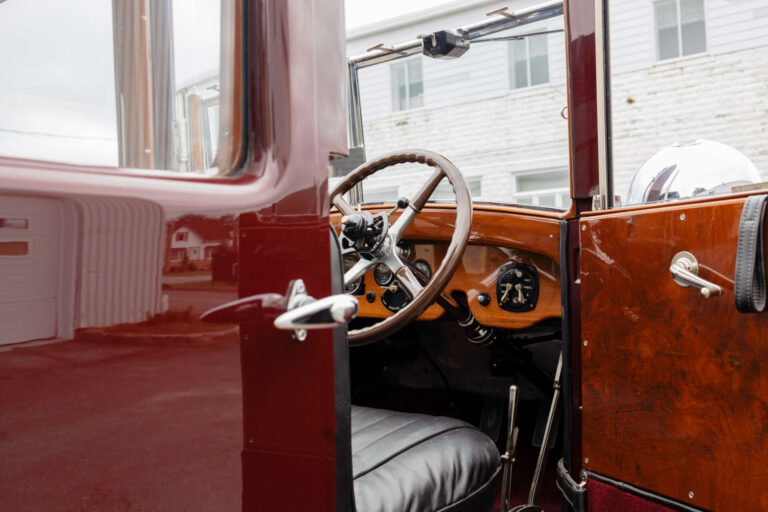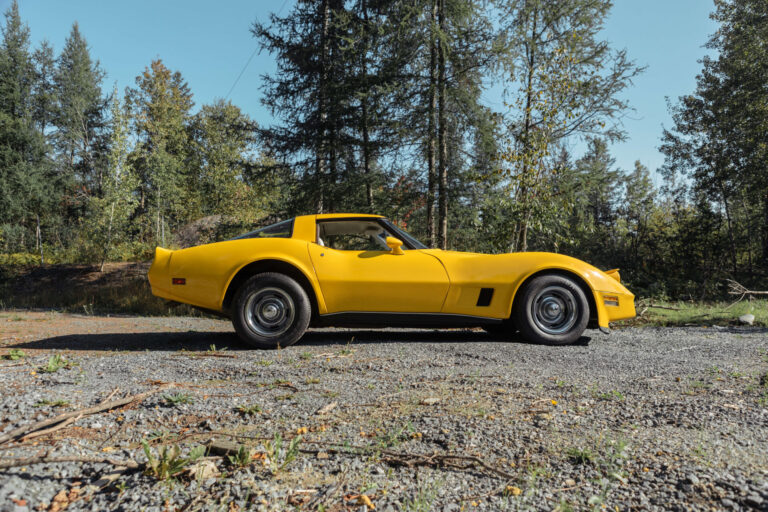The Automotive Dream “One man and his dream had not simply left the world with an engine and four wheels; Henry Ford and his Model T had influenced people's everyday lives - where they lived, how they spent their leisure time, even how they viewed themselves.” - Gary...
Cadillac Model A 1903

Photo credit - Good Vision Prod
Recent posts
Lagonda 16/80 Special Six 1933
English Touring The car we present to you this week is the Lagonda 16/80 Special Six in the Demers Car Collection. Lagonda was a luxury British car brand that Aston Martin eventually absorbed. Through its association with Aston Martin, it is sometimes hard to remember...
An Introduction to Lagonda
Before Aston Martin “The history of Lagonda cars is synonymous with sophistication, opulence, and groundbreaking performance” - An article for Discovery UK Today, we may recognize the name Lagonda from its association with Aston Martin. Before these two brands...
The Electric Starter
From the Crank to the Electric Starter “Notwithstanding the hilarious grandiosity of marketing materials from the early 20th century, many people believe the starter motor was the single car part that most transformed the automobile from a luxury fascination to...
The Standard of the World
“No other American car on the market in the first decade of the century was constructed to higher standards than Cadillac.” – Stephen W. Sears in The Automobile in America
Some of you may know that Cadillac has long had the slogan “Standard of the World,” but do you know where it came from? Also, what does it mean exactly? The company had it almost since the inception of the company. Learning about Cadillac’s Model A will answer all of these questions. The Demers Car Collection is lucky to have a 1903 Cadillac Model A Runabout to illustrate this article. Keep reading to learn more about the context in which this model was created, what innovation it brought to the automotive world and where Cadillac’s long-standing slogan came from.

The Context
Cadillac is the second oldest standing American car manufacturer after Buick! Quickly from its inception, it has established itself a solid reputation. Some even argue that during the first decade of the 1900s, it was producing the best quality cars on the continent. Needless to say, when it introduced its first model in 1902, Cadillac started on the right foot! But before we get into it, let’s see what were the winning ingredients that made this car possible.
Henry Leland
Amongst others, we have Henry Leland to thank for the creation of Cadillac. Born in 1843, he was an engineer who specialized in precision manufacturing. Throughout his career, he found ways to work more efficiently and more accurately. Plus, he was trained under Samuel Colt in firearm production, a field in which precision manufacturing is very important. He further honed in on his skill in precision manufacturing while working on intricate devices like electric razors and sewing machines. Eventually, he dove into the automotive field by making gears, engines and other automotive parts in association with Robert Faulconer. By the turn of the century, Leland was a well-respected engineer and businessman.

Henry Ford
Indirectly, we also have Henry Ford to thank for the Model A and the creation of Cadillac. Willam Murphy and Lemuel Brown, Ford’s previous financial bakers, hired Leland and his company to appraise the Henry Ford Company for liquidation. It took Ford three failed attempts before getting his passenger car production business off the ground. The Henry Ford Company was just another failed attempt.
When Leland came to make his evaluation of the value of the company, he found several car bodies that Ford had left behind. Seeing these, Leland had an idea. Why not pair these leftover bodies with the engines, transmissions and steering gears made by Leland and Faulconer to make their own cars in this facility already dedicated to car manufacturing? In 1902, the Cadillac Automobile Company was created by Leland, Faulconer and Ford’s ex-financial bakers to make this project happen. Cadillac’s first cars looked eerily similar to Ford’s first production cars, also called the Model A which appeared in 1903.

The Cadillac Model A
Cadillac’s first car was the Model A. It had a single-cylinder engine fitted under the front seat. The model was available in either the Runabout or Tonneau configuration. The Runabout was a two-seater and the Tonneau had four seats. As mentioned earlier, the engine and other mechanical components were the work of Leland while the bodies were essentially recycled from Ford’s failed business. The Model A was capable of about 6 hp and reached maximum speeds of about 35 mph or about 56 km/h.
Cadillac quickly developed a reputation for quality and durability. For his automotive venture, Leland adopted the same norms in terms of standardization and precision manufacturing that he had learned and adopted in his previous work. This allowed for the rapid and efficient production of the Model A. Completed in 1902, this first car was introduced at the New York Auto Show in 1903. Aimed at the mass market, the cheapest of the two body styles sold for $750. Over 2,000 orders were secured by the conclusion of the auto show. This interest made it an instant success and virtually sold out the Model A in its first year of production.
Apart from the quality of its engineering and appealing price, the Model A also had aesthetic appeal. Compared to its direct competitors, buyers admired its styling more than its performance. You can attest to this by yourself by looking at the one in the Demers Car Collection! Of course, it has had an extensive restoration, but it can give you an idea of how it looked in 1903.

The Standard of the World
Now onto the slogan. In 1908, three Cadillacs were sent to London to participate in a standardization test. There, they were disassembled piece by piece. Each vehicle’s parts were color-coded. Once disassembled, the pieces of the three cars were mixed together and some parts were randomly replaced by stock parts. The three cars were then reassembled, using the mixed-up components. Their mismatched colors gave them the nickname of Harlequins. All three cars were subsequently started and completed a journey of a predetermined distance. All three Frankenstein Model A’s performed adequately. What this proved is that Cadillac cars were in fact using standardized, interchangeable parts!
This was an important milestone from an industry perspective as car manufacturing companies active in the United States at this time hadn’t adopted precision manufacturing principles yet. Standardization and precision manufacturing rationalized the building process and made car manufacturing more efficient. It is a fundamental principle for the production of vehicles in series. From a consumer’s perspective, this means that if a piece of your car breaks down, you can easily find one to replace it. Before the standardization of parts, vehicles were made largely artisanally, each car being slightly different from the next, making the substitution of parts difficult.
The exploits of Cadillac in London won them the famed Dewar Trophy, which some say is like the equivalent of winning a Nobel Prize today. This event also gave Cadillac its slogan “Standard of the World” as the challenge proved to everyone that Cadillac did indeed use standardized parts. More than that, the slogan also underlined that Cadillac was a brand that set the standard in the industry. It was the brand against which other manufacturers had to measure themselves, not only in the United States but in the whole world.

What Now?
It’s interesting to see how the histories of various brands intercept each other. Fierce competitors, Ford and Cadillac have closely related inception stories. This is the case with many other car manufacturers too. If you’re interested in learning more about automotive history and how brands came to be, don’t miss next week’s article in which we discuss the genesis of the Lagonda brand.
The Nitty Gritty
- 98 cu. in. single-cylinder engine
- Solid front and live rear axle with semi-elliptic leaf springs suspension
- Single-chain drive
- Two-speed transmission
- Dual differential-mounted brakes
- 72 in wheelbase
- About 6 hp
- Max speed: about 35 mph or 56 km/h



